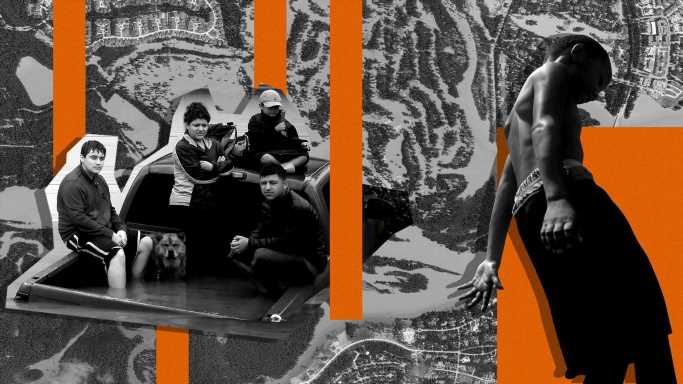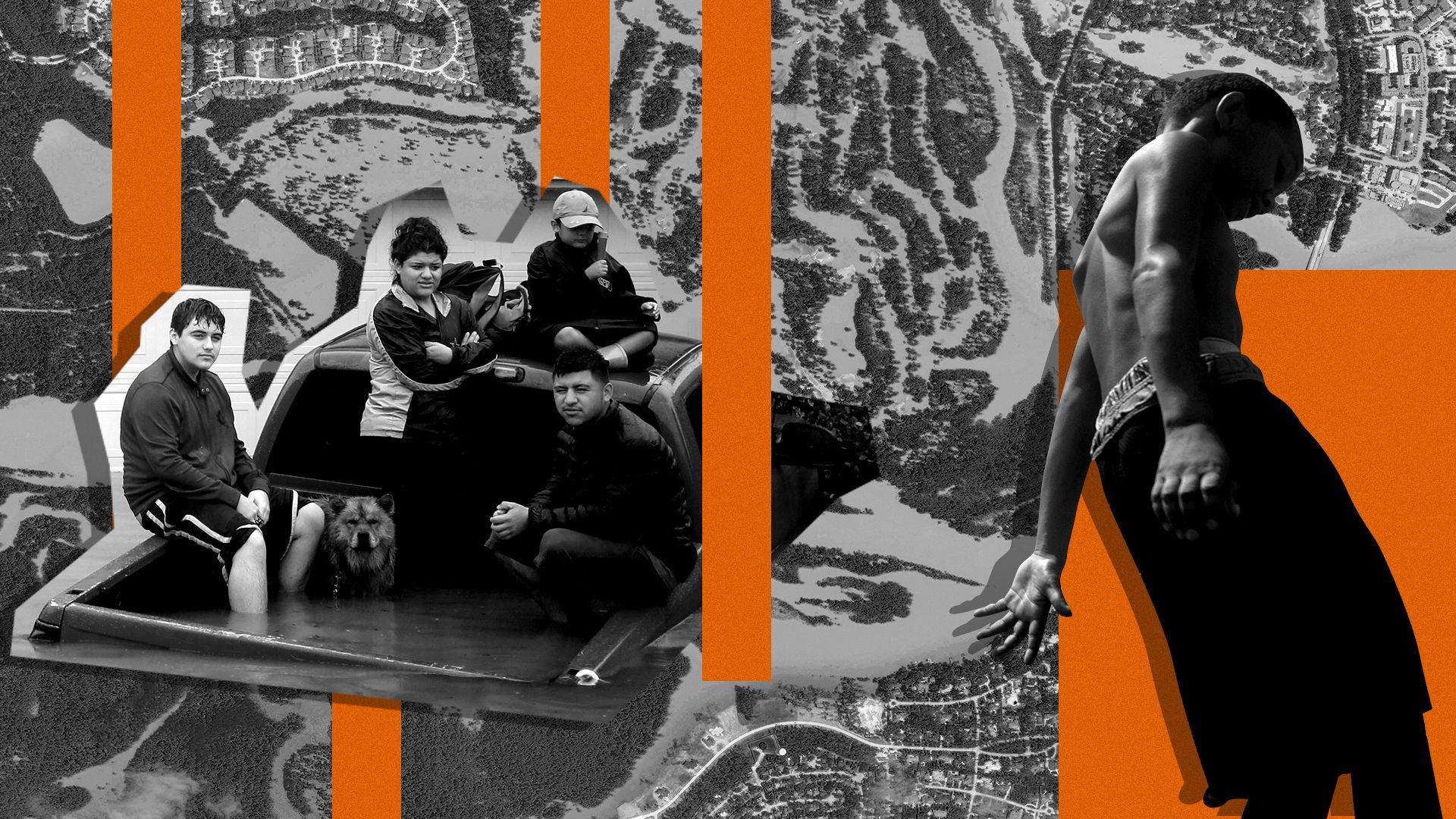
Photo illustration: Aïda Amer/Axios. Photo: Michael Robinson Chavez/The Washington Post, Luke Sharrett/Bloomberg, Satellite image Ⓒ 2019 Maxar Technologies via Getty Images
A recently published study out of the University of Kansas suggests that damaging racial and gender stereotypes were perpetuated by newspaper images included in coverage of Hurricane Harvey.
The big picture: Presenting people of color as victims and white people as rescuers in U.S. news coverage of climate disasters has long been a problematic trend.
Details: Published in the journal Critical Studies in Media Communication, the study analyzed 106 front-page images published by the 11 highest circulating national newspapers and four Texas-based daily publications in the week following Harvey's 2017 landfall in Texas.
- It found that of the 106 photographs, 63 included images of people in flood water, 33 were of shelters, 57 showed a 'strong masculine hero,' and 27 showed people repairing their homes.
- The study's author — Ever Josue Figueroa, assistant professor of journalism at the University of Kansas — used semiotic analysis, or coding concepts in an image, to classify the cultural connotations in the way the photos featured people.
- People of color were depicted as "displaced migrants and women as damsels in distress, while white men were represented as saviors and caretakers," according to the peer-reviewed study.
Between the lines: This isn't overtly or intentionally done. In disaster events, journalists often rely on authority figures as sources, such as first responders or government officials, who tend to be predominately white men, according to Figueroa.
How it works: Sticking solely with sources like these during a crisis can result in images that reinforce false narratives about communities of color, migrants and federal systems like welfare.
- "If I only see images of people of color being given FEMA aid or being rescued from hurricane floods, it paints the community as incapable of having self-autonomy to persevere through problems on their own," Figueroa told Axios.
What they're saying: Stefanie Kempton, an assistant professor of communications at Penn State Altoona who wasn't involved with the study — but has researched racial trends in news coverage — told Axios that media representations during a disaster have cultural, societal and political implications.
- "Research on media representations of marginalized groups during natural disasters is important because we know these representations impact the way these groups are viewed in real life," Kempton wrote in an email.
Flashback: A 2007 study published in the journal Visual Communication Quarterly had similar takeaways.
- The study examined news photographs from four national newspapers covering Hurricane Katrina, finding they reinforced negative stereotypes about Black people, who were overwhelmingly depicted as victims, while white people were more frequently depicted as helpers and rescuers.
Yes, but: This new study has some limitations. For one, the sample doesn't include alternative publications or digital news sites, and omits smaller circulating newspapers.
- Plus, analyzing photographs and not accompanying text can lead to missing context — like how communities of color are unequally impacted by climate disasters.
- Figueroa acknowledges these limitations, but stresses that the connotations of an image connects to other abstract ideas — and that there is a difference in how "victimhood" is showcased and represented in the pictures.
- "Images are the things that we immediately gravitate towards when we open the newspaper, and those images are going to provide some kind of impact on us," Figueroa told Axios.
Source: Read Full Article
